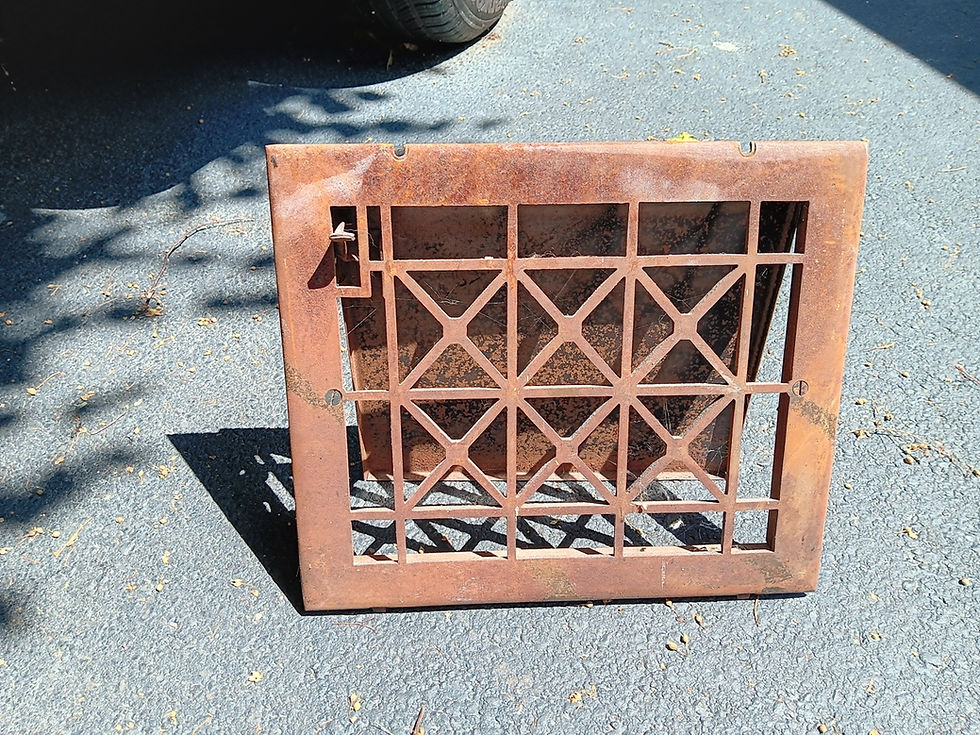Ideas from Ed: Cool jigs (Volume 5, Issue 2)
- edwardpetrus

- Feb 1, 2022
- 3 min read
I thought I’d do something completely different this month, and show you some of the “jigs” I’ve built to make various tasks much easier and more accurate. Sure, everyone has made featherboards and push sticks for their table saws, but these are just a bit more unique, I think. The moral of the story here is that if you see a need for something you don’t have, there might be a way of making it yourself!
I’ll begin with the little roller I made while installing some press-down floor tiles for a friend. It’s built from an old shovel handle, and uses a piece of wooden dowel for the roller and another for a handle. You can make the handle longer for more leverage, but I kept it short so that it can easily fit into my job toolbox.

The next one is something I find very useful when hanging a light picture on a wall. The issue always seems to be locating the precise spot to drive the nail/hanger so that the picture ends up being exactly where it is wanted. For frames with a single cross-wire on the reverse, this little gizmo helps. I hold the red knob with the frame hanging from the hook, locate everything where it should be, then remove the frame and press the jig against the wall. The back side of the hook protrudes just enough to make a small dimple on the wall, exactly where the hanger needs to be!


Sometimes I need to hold something really tightly in my heavy-duty vise, but often it’s an item that I don’t want marred by the aggressive metal jaws. I made these two inserts out of sugar/rock maple, and I pop out the metal vise units and pop these into their places.


This next item is one of the handiest things I have. It’s a guide for my circular saw. There’s a strip on the left side of the unit that the shoe of the saw tracks against, and a strip on the reverse very accurately positioned at 90 degrees from that front strip. It was built just a hair oversized, and then trimmed with the saw actually running over it. Thus, the right edge is EXACTLY on the cut line. If I need to cut something, perhaps a 2 x 12, I mark the length, and position this jig so the right edge is on the mark. Running the circular saw over this guide gives me an exact 90-degree cut at precisely the spot I wanted it, every time.


Here’s a simple thing that lets me very quickly cut sheets of sandpaper to the exact size required by my portable sander. All I need to do is lay the sandpaper into the 3-sided recess, hold the “cover” down on it, and run a utility knife along the cover edge. (I do it rough side down, of course, for the sake of the utility knife blade.)

I thought we should have a “guess what it is” contest for this next jig, but I fear that no one would correctly answer it! I’ve built many decks over the years, and have to say, the ones with hidden fasteners and synthetic materials are probably the nicest. However, when using pressure-treated boards, they are usually face-screwed into the joist framing. Even then, appearance is important, meaning that the screws should all line up in exactly a straight line. The two little extensions sticking down from this jig are spaced a joist thickness apart, and are themselves 1/8 of an inch thick. Setting this unit atop a joist, over and between boards, automatically sets the needed 1/8 inch board spacing. The main body has two rows of 3 alignment holes. If the deck board to joist connection is mid-board, then I drill the attaching screws through the middle holes. If the connection is at the junction of two deck board ends, I use the outer holes. All boards then are evenly spaced and all screws are perfectly aligned in both directions.


One final thought on the above, though. Leaving space between deck boards is what is supposed to be done, so that water drains through. My scenario above is best for dry wood. If you’re using treated wood that is very wet, always pull the boards together as tightly as possible. They will definitely shrink as they dry and you’ll end up with spaces without even trying. In that case, you can turn my jig around 180 degrees and still use it for screw alignment purposes only.
I might show a few more gadgets another time. It really is worth the effort to make these little helpers, and if you’re like me, you’ll use them over and over again.
I hope all your projects go well. Thanks for reading, and happy restoring!
Ed
If you’d like to download a PDF of this “Ideas” column, click here:




Comments